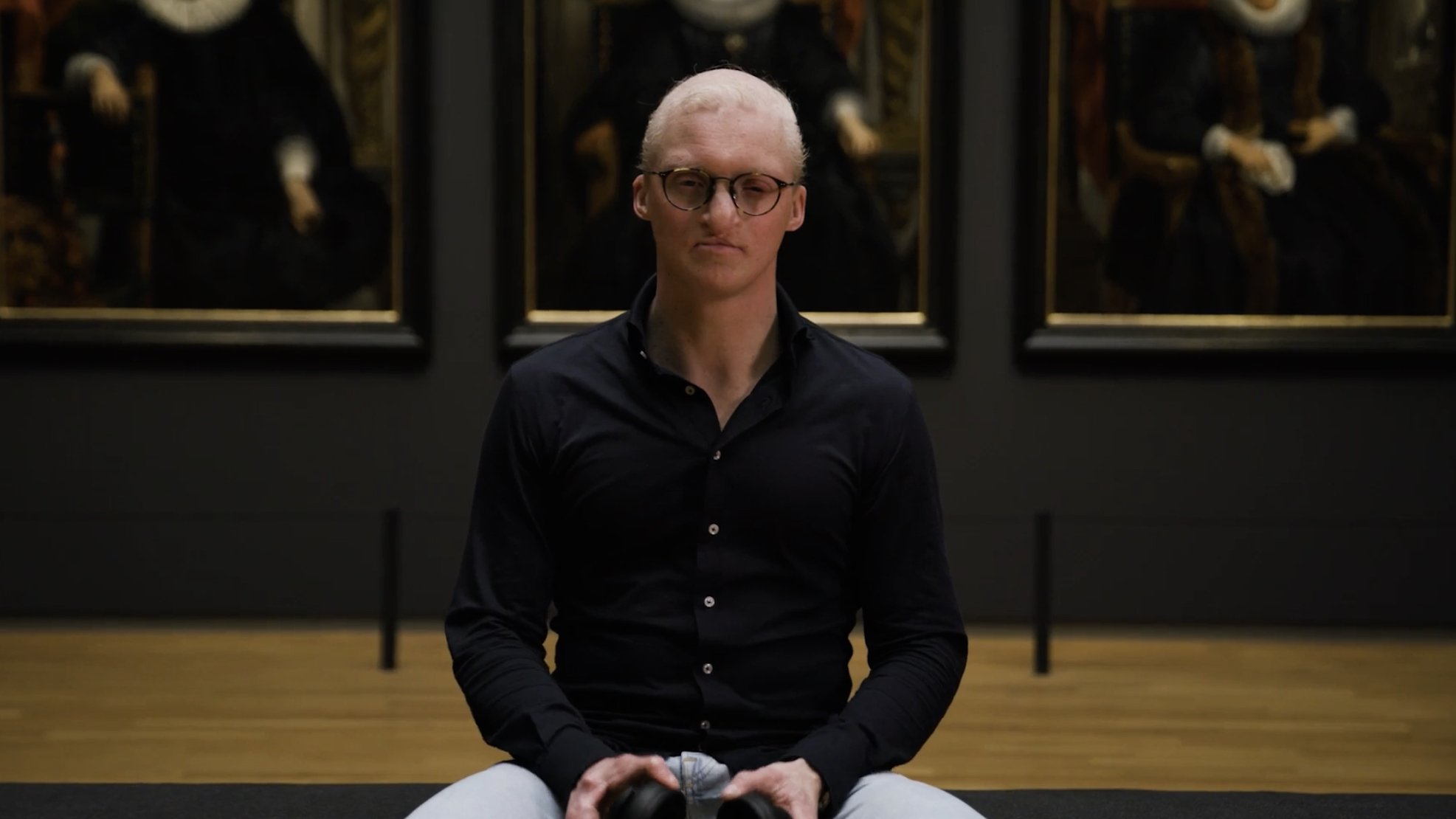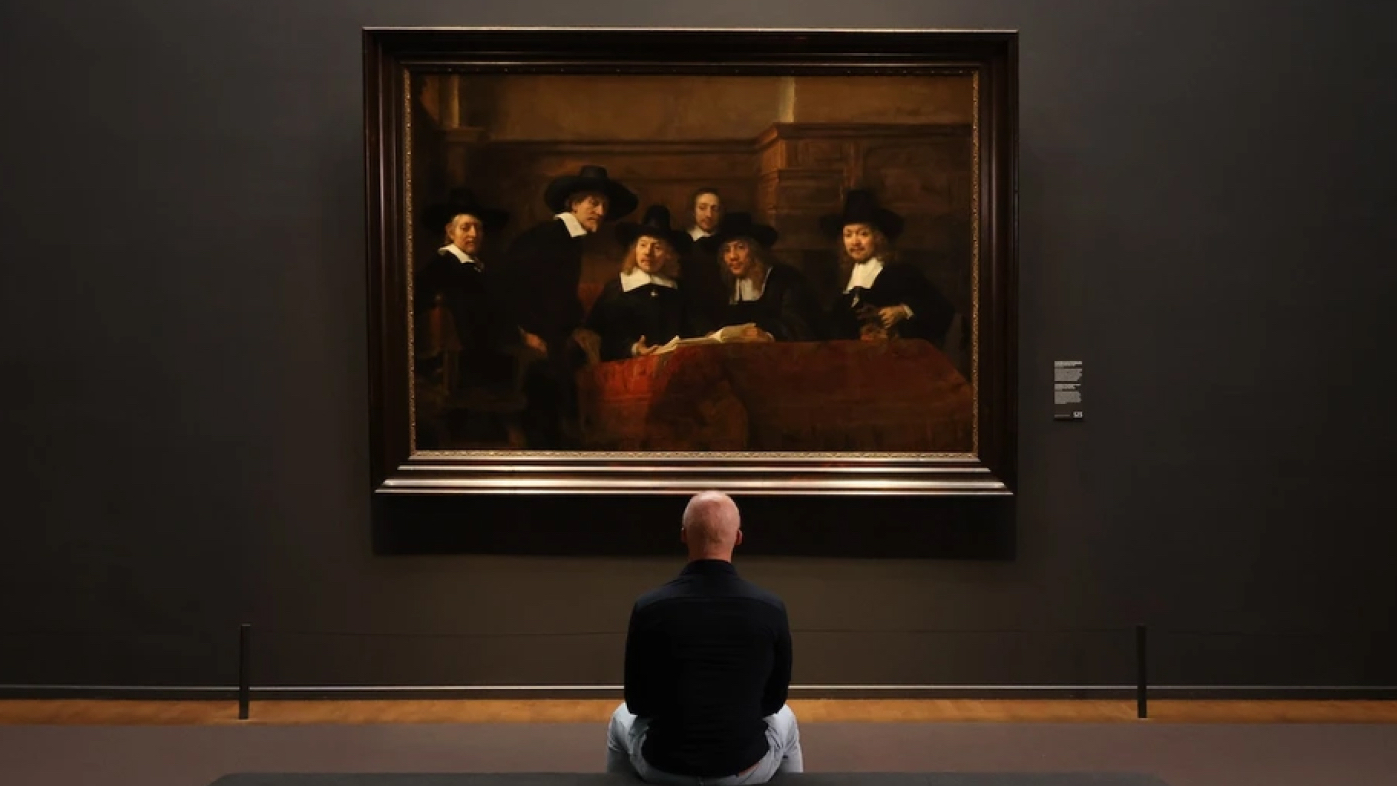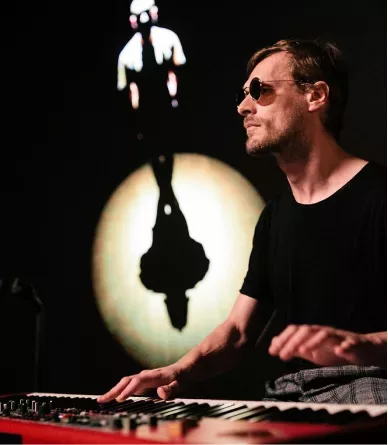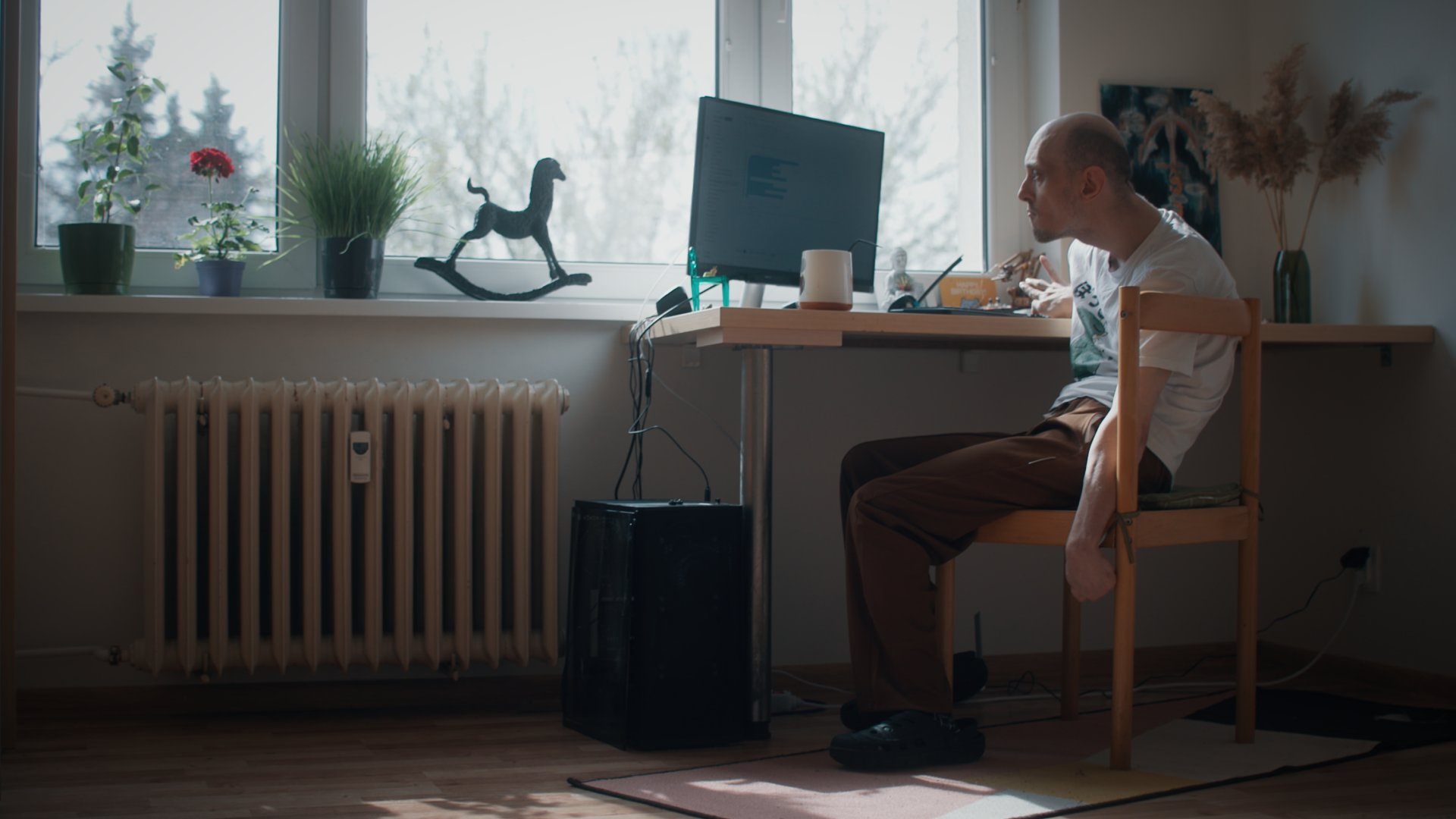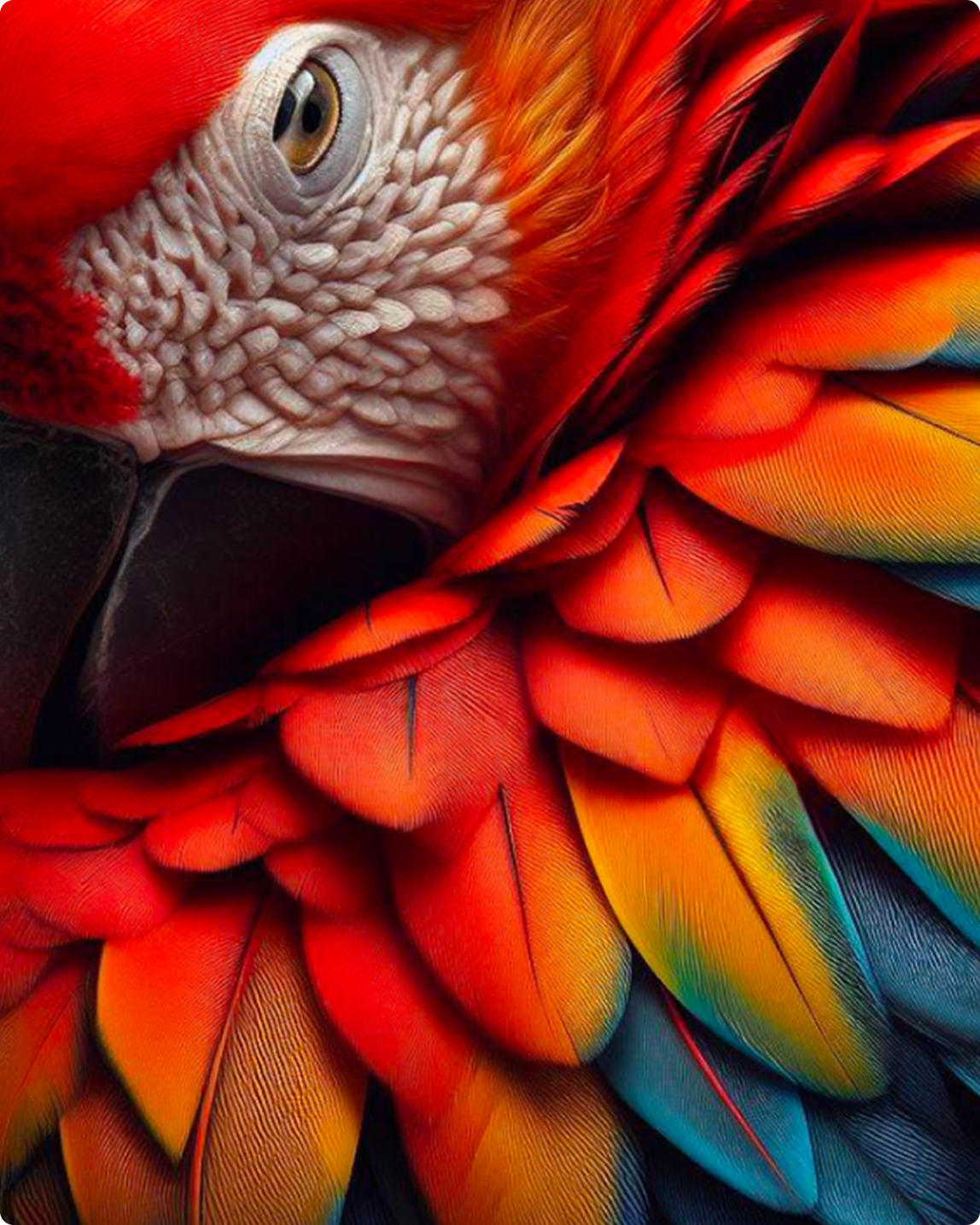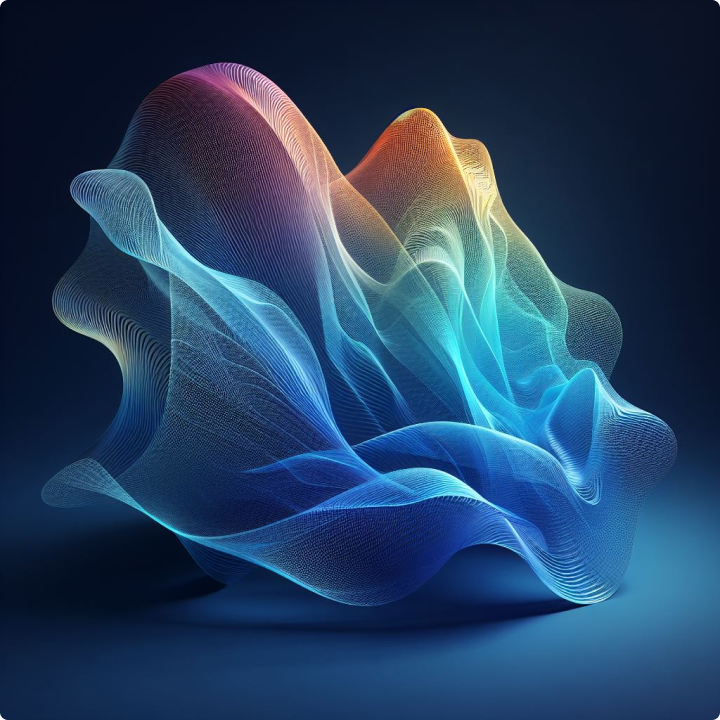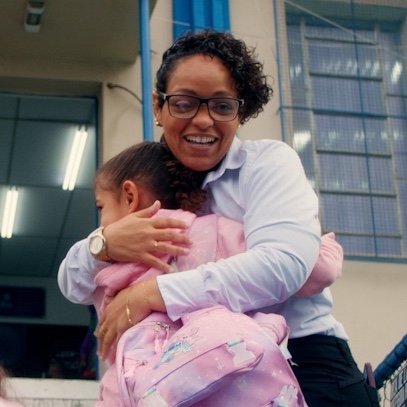Access to art is a human right
Every artistic interpretation deserves to be part of the conversation.
Art is more than something to be admired by the eye. It’s a powerful statement. A personal resistance. An emotional connection to the world around us. But for some, like Carin de Bruin who has Usher syndrome, a rare inherited disease that causes both hearing loss and blindness, art is often not accessible. She regularly relies on friends and guided tours to access art museums. “Sometimes it feels like I’m excluded,” says Carin. “My low vision impacts a lot of aspects of life like education, employment, and social activities, but also my experience of cultural things.”
I think that art is a kind of self-expression. And while I have low vision, I am looking for alternative ways to experience art.
175 million people
around the world are blind or have low vision
In museums, a typical description of a piece of art can tell you factual details like the title and date of the artwork, the origins of the artist, and the history and inspiration for the art. But many times, the literal and emotional details of the piece—crucial for interpretation by people that are blind or low vision—are missing.
What can an observer gain from learning that the blue in a piece of art is light-colored as opposed to dark? Can it create a stronger image in the mind? For blind and low vision art patrons, a description is the only way to access all that art has to offer. Description serves as the vitally important bridge that makes art and history accessible to everyone, but when you have a collection of a million artworks, how do you scale to create new accessible descriptions for people like Carin? She’s one of the estimated 175 million people around the world who are blind or low vision. Carin—and scores of aesthetes like her—desire not only to access art, but independence in doing so. And the Rijksmuseum in Amsterdam is experimenting with how it can give it to them through their collection online.
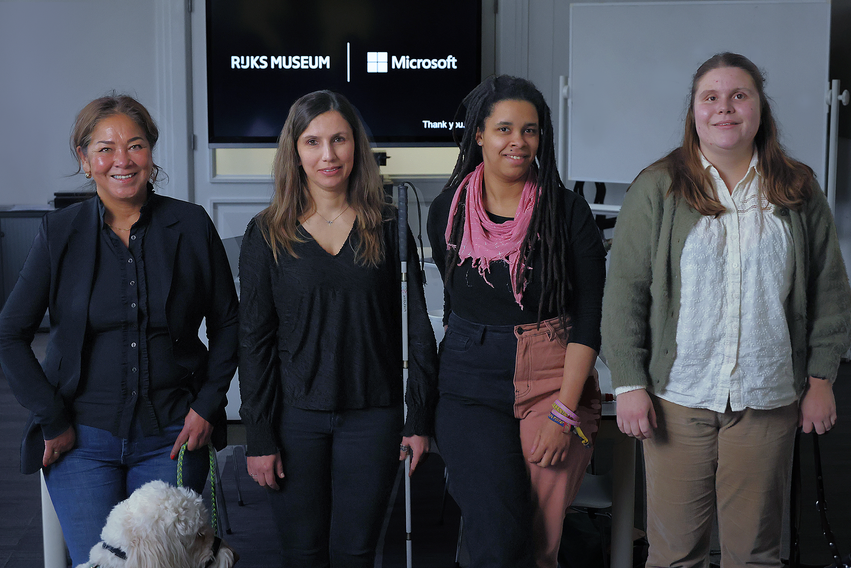
I’ve been seen and heard by Microsoft. The AI-generated descriptions are so detailed that I can get information from that and picture it in my imagination.
Art, meet AI
Inviting 2.5 million annual visitors to experience a feeling of beauty and sense of time, the Rijksmuseum is an architectural masterpiece featuring 800 years of Dutch art and history. “The Rijksmuseum belongs to and is for everyone,” says Cathelijne Denekamp, Manager of Accessibility and Inclusion at the museum, and the driving force behind the museum’s ongoing commitment to inclusivity.
Microsoft and Rijksmuseum are joining forces to improve and expand the art experience for blind and low-vision community members online, too. During the pandemic, museum employees took advantage of the downtime by writing descriptions for 300 artworks and objects, but it didn’t happen overnight. “It took us one hour to create a description for each artwork,” says Cathelijne. With Copilot, existing museum descriptions can be scaled up and applied to a collection of more than one million pieces at a much faster pace. What would have taken decades could now be completed in a matter of hours. “To use technology to scale this, we are exploring possibilities for making our artworks accessible for everybody worldwide.”
The museum is leveraging the existing written descriptions to help develop the AI model which can be scaled further. “We already have some of the art descriptions that we can work with, but now we can really scale this and make it available to the whole collection eventually at a very rapid pace,” says Floris Horsman, Cloud Solution Architect at Microsoft. As an art enthusiast with low vision himself, Floris believes that AI has the power to remove boundaries.
The Rijksmuseum is no stranger to revamping descriptions to better serve equity and access in the art community. When considering the different accessibility needs of museum patrons, the Rijksmuseum has been a pioneer in its initiatives like open-source IP and programs that include stimulus-free evening openings, accessible family tours, and tours for the elderly. People like Alicia Hoost, whose partial blindness started from birth, have experienced the benefits of accessibility firsthand. “I participated in Rijksmuseum programs, mostly the guided tours and also their touch and smell interpretations of artworks which have helped me to better understand the story behind the art.” Now, including blind and low-vision museum patrons in discussions around accessibility is another step in the journey.
Close your eyes and listen to ‘Self-portrait’ by Vincent Van Gogh
Humans at the heart of everything
Describing things like color, light, space, composition and even relationships in art is crucial. “It’s a challenge to bring so many different insights and perspectives into the end result, but it’s a fun one,” says Floris.
Rijksmuseum and Microsoft hosted a series of inclusive design testing sessions and invited local members of the blind and low-vision community to experience the AI-generated descriptions and share their feedback. Insights gathered from the people who rely on and benefit most from descriptions ensure that modifications to the machine learning model can be made before it’s decided to apply it to the entire collection. “I think it shows other people that we matter. We know that, and now others hopefully will understand it as well because we can be in the same space as sighted people and not have the same experience because we are not the same. But this tool will show others that our experience is as valuable as that of sighted people,” says Alicia.
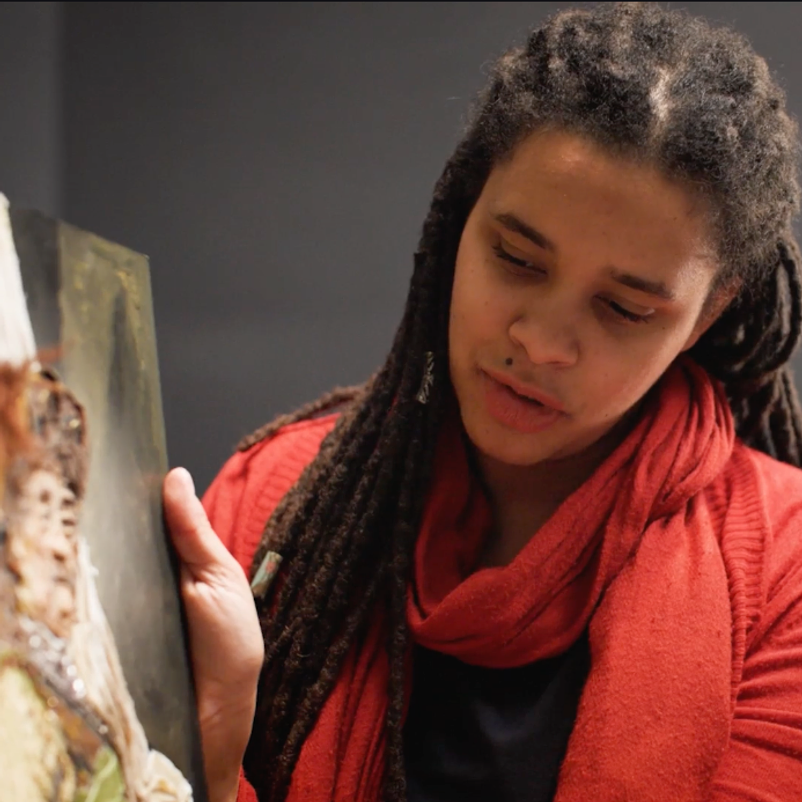
Accessibility without limits
“Accessibility like this will make a huge impact, bringing art to the world at a scale that was once impossible,” says Cathelijne. “The data from this project has the exciting potential to evolve the way museums operate worldwide.” While still underway, Rijksmuseum and Microsoft believe this project can serve as a model and guiding framework for the estimated 95,000 museums that want to prioritize art accessibility in service of the over 175 million blind and low-vision people around the world. And this echoes the sentiments of members of the community like Alicia. “I hope that this project can help people like me find their own way in museums and connect with art and history and our own culture.”
I hope that in the future there are more stories unlocked for more people, especially people like me.
Donate Microsoft Rewards points to support The Rijksmuseum.
